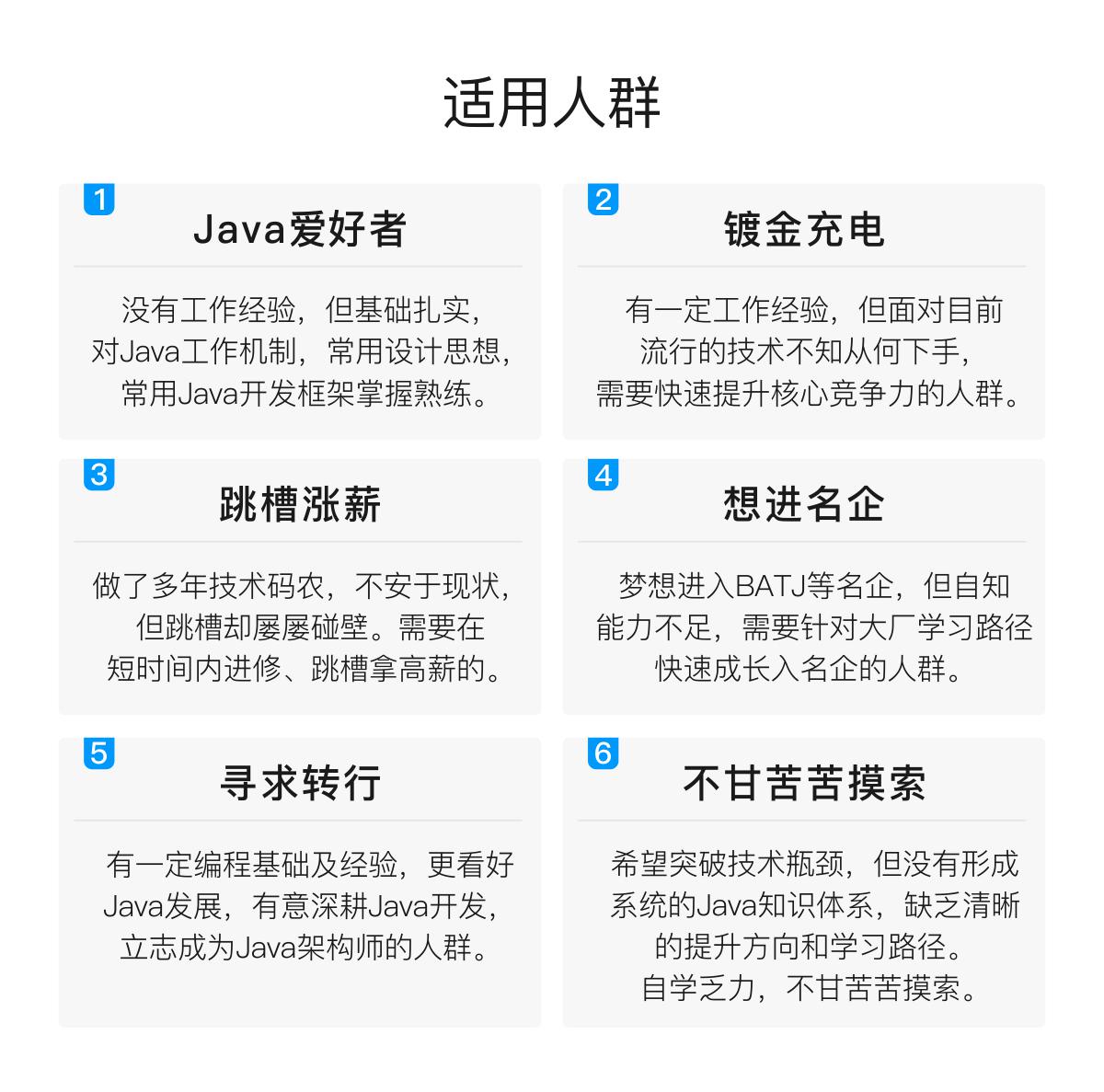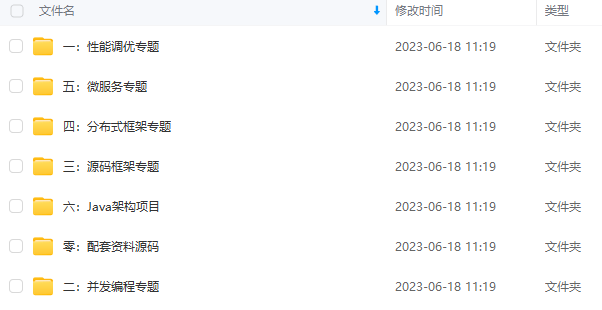pel:组中所有待确认信息
consumers:组中所有消费者,Rax值指向 streamConsumer 结构体。
/* A specific consumer in a consumer group. */
typedef struct streamConsumer {
mstime_t seen_time; /* Last time this consumer was active. */
sds name; /* Consumer name. This is how the consumer
will be identified in the consumer group
protocol. Case sensitive. */
rax pel; / Consumer specific pending entries list: all
the pending messages delivered to this
consumer not yet acknowledged. Keys are
big endian message IDs, while values are
the same streamNACK structure referenced
in the “pel” of the conumser group structure
itself, so the value is shared. */
} streamConsumer;
这两处的 pel 都指向待确认的消息信息,如下结构体保存这些信息:
/* Pending (yet not acknowledged) message in a consumer group. */
typedef struct streamNACK {
mstime_t delivery_time; /* Last time this message was delivered. */
uint64_t delivery_count; /* Number of times this message was delivered.*/
streamConsumer consumer; / The consumer this message was delivered to
in the last delivery. */
} streamNACK;
至此,整个 Stream 的脉络已经明朗。再看一个迭代器吧。
像这样一个有点麻烦的结构,那肯定得定制一个迭代器啊!!!
而且这个迭代器,不简单。
/* We define an iterator to iterate stream items in an abstract way, without
-
caring about the radix tree + listpack representation. Technically speaking
-
the iterator is only used inside streamReplyWithRange(), so could just
-
be implemented inside the function, but practically there is the AOF
-
rewriting code that also needs to iterate the stream to emit the XADD
-
commands. */
typedef struct streamIterator {
stream *stream; //当前迭代器正在遍历的消息流
streamID master_id; /* ID of the master entry at listpack head. */
uint64_t master_fields_count; /* Master entries # of fields. */
unsigned char master_fields_start; / Master entries start in listpack. */
unsigned char master_fields_ptr; / Master field to emit next. */
int entry_flags; /* Flags of entry we are emitting. */
int rev; /* True if iterating end to start (reverse). */
uint64_t start_key[2]; /* Start key as 128 bit big endian. */
uint64_t end_key[2]; /* End key as 128 bit big endian. */
raxIterator ri; /* Rax iterator. */
unsigned char lp; / Current listpack. */
unsigned char lp_ele; / Current listpack cursor. */
unsigned char lp_flags; / Current entry flags pointer. */
/* Buffers used to hold the string of lpGet() when the element is
-
integer encoded, so that there is no string representation of the
-
element inside the listpack itself. */
unsigned char field_buf[LP_INTBUF_SIZE];
unsigned char value_buf[LP_INTBUF_SIZE];
} streamIterator;
添加消息
/* Adds a new item into the stream ‘s’ having the specified number of
-
field-value pairs as specified in ‘numfields’ and stored into ‘argv’.
-
Returns the new entry ID populating the ‘added_id’ structure.
-
If ‘use_id’ is not NULL, the ID is not auto-generated by the function,
-
but instead the passed ID is used to add the new entry. In this case
-
adding the entry may fail as specified later in this comment.
-
The function returns C_OK if the item was added, this is always true
-
if the ID was generated by the function. However the function may return
-
C_ERR if an ID was given via ‘use_id’, but adding it failed since the
-
current top ID is greater or equal. */
int streamAppendItem(stream *s, robj **argv, int64_t numfields, streamID *added_id, streamID *use_id) {
/* Generate the new entry ID. */
streamID id;
if (use_id)
id = *use_id;
else
streamNextID(&s->last_id,&id);
/* Check that the new ID is greater than the last entry ID
-
or return an error. Automatically generated IDs might
-
overflow (and wrap-around) when incrementing the sequence
part. */
if (streamCompareID(&id,&s->last_id) <= 0) return C_ERR;
/* Add the new entry. */
raxIterator ri;
raxStart(&ri,s->rax);
raxSeek(&ri,“$”,NULL,0);
size_t lp_bytes = 0; /* Total bytes in the tail listpack. */
unsigned char lp = NULL; / Tail listpack pointer. */
/* Get a reference to the tail node listpack. */
if (raxNext(&ri)) {
lp = ri.data;
lp_bytes = lpBytes(lp);
}
raxStop(&ri);
/* We have to add the key into the radix tree in lexicographic order,
-
to do so we consider the ID as a single 128 bit number written in
-
big endian, so that the most significant bytes are the first ones. */
uint64_t rax_key[2]; /* Key in the radix tree containing the listpack.*/
streamID master_id; /* ID of the master entry in the listpack. */
/* Create a new listpack and radix tree node if needed. Note that when
-
a new listpack is created, we populate it with a “master entry”. This
-
is just a set of fields that is taken as references in order to compress
-
the stream entries that we’ll add inside the listpack.
-
Note that while we use the first added entry fields to create
-
the master entry, the first added entry is NOT represented in the master
-
entry, which is a stand alone object. But of course, the first entry
-
will compress well because it’s used as reference.
-
The master entry is composed like in the following example:
-
±------±--------±-----------±--------±-/–±--------±--------±+
-
| count | deleted | num-fields | field_1 | field_2 | … | field_N |0|
-
±------±--------±-----------±--------±-/–±--------±--------±+
-
count and deleted just represent respectively the total number of
-
entries inside the listpack that are valid, and marked as deleted
-
(deleted flag in the entry flags set). So the total number of items
-
actually inside the listpack (both deleted and not) is count+deleted.
-
The real entries will be encoded with an ID that is just the
-
millisecond and sequence difference compared to the key stored at
-
the radix tree node containing the listpack (delta encoding), and
-
if the fields of the entry are the same as the master entry fields, the
-
entry flags will specify this fact and the entry fields and number
-
of fields will be omitted (see later in the code of this function).
-
The “0” entry at the end is the same as the ‘lp-count’ entry in the
-
regular stream entries (see below), and marks the fact that there are
-
no more entries, when we scan the stream from right to left. */
/* First of all, check if we can append to the current macro node or
-
if we need to switch to the next one. ‘lp’ will be set to NULL if
-
the current node is full. */
if (lp != NULL) {
if (server.stream_node_max_bytes &&
lp_bytes >= server.stream_node_max_bytes)
{
lp = NULL;
} else if (server.stream_node_max_entries) {
int64_t count = lpGetInteger(lpFirst(lp));
if (count >= server.stream_node_max_entries) lp = NULL;
}
}
int flags = STREAM_ITEM_FLAG_NONE;
if (lp == NULL || lp_bytes >= server.stream_node_max_bytes) {
master_id = id;
streamEncodeID(rax_key,&id);
/* Create the listpack having the master entry ID and fields. */
lp = lpNew();
lp = lpAppendInteger(lp,1); /* One item, the one we are adding. */
lp = lpAppendInteger(lp,0); /* Zero deleted so far. */
lp = lpAppendInteger(lp,numfields);
for (int64_t i = 0; i < numfields; i++) {
sds field = argv[i*2]->ptr;
lp = lpAppend(lp,(unsigned char*)field,sdslen(field));
}
lp = lpAppendInteger(lp,0); /* Master entry zero terminator. */
raxInsert(s->rax,(unsigned char*)&rax_key,sizeof(rax_key),lp,NULL);
/* The first entry we insert, has obviously the same fields of the
- master entry. */
flags |= STREAM_ITEM_FLAG_SAMEFIELDS;
} else {
serverAssert(ri.key_len == sizeof(rax_key));
memcpy(rax_key,ri.key,sizeof(rax_key));
/* Read the master ID from the radix tree key. */
streamDecodeID(rax_key,&master_id);
unsigned char *lp_ele = lpFirst(lp);
/* Update count and skip the deleted fields. */
int64_t count = lpGetInteger(lp_ele);
lp = lpReplaceInteger(lp,&lp_ele,count+1);
lp_ele = lpNext(lp,lp_ele); /* seek deleted. */
lp_ele = lpNext(lp,lp_ele); /* seek master entry num fields. */
/* Check if the entry we are adding, have the same fields
- as the master entry. */
int64_t master_fields_count = lpGetInteger(lp_ele);
lp_ele = lpNext(lp,lp_ele);
if (numfields == master_fields_count) {
int64_t i;
for (i = 0; i < master_fields_count; i++) {
sds field = argv[i*2]->ptr;
int64_t e_len;
unsigned char buf[LP_INTBUF_SIZE];
unsigned char *e = lpGet(lp_ele,&e_len,buf);
/* Stop if there is a mismatch. */
if (sdslen(field) != (size_t)e_len ||
memcmp(e,field,e_len) != 0) break;
lp_ele = lpNext(lp,lp_ele);
}
/* All fields are the same! We can compress the field names
- setting a single bit in the flags. */
if (i == master_fields_count) flags |= STREAM_ITEM_FLAG_SAMEFIELDS;
}
}
/* Populate the listpack with the new entry. We use the following
-
encoding:
-
±----±-------±---------±------±------±/-±------±------±-------+
-
|flags|entry-id|num-fields|field-1|value-1|…|field-N|value-N|lp-count|
-
±----±-------±---------±------±------±/-±------±------±-------+
-
However if the SAMEFIELD flag is set, we have just to populate
-
the entry with the values, so it becomes:
-
±----±-------±------±/-±------±-------+
-
|flags|entry-id|value-1|…|value-N|lp-count|
-
±----±-------±------±/-±------±-------+
-
The entry-id field is actually two separated fields: the ms
-
and seq difference compared to the master entry.
-
The lp-count field is a number that states the number of listpack pieces
-
that compose the entry, so that it’s possible to travel the entry
-
in reverse order: we can just start from the end of the listpack, read
-
the entry, and jump back N times to seek the “flags” field to read
-
the stream full entry. */
lp = lpAppendInteger(lp,flags);
lp = lpAppendInteger(lp,id.ms - master_id.ms);
lp = lpAppendInteger(lp,id.seq - master_id.seq);
if (!(flags & STREAM_ITEM_FLAG_SAMEFIELDS))
lp = lpAppendInteger(lp,numfields);
for (int64_t i = 0; i < numfields; i++) {
sds field = argv[i2]->ptr, value = argv[i2+1]->ptr;
if (!(flags & STREAM_ITEM_FLAG_SAMEFIELDS))
lp = lpAppend(lp,(unsigned char*)field,sdslen(field));
lp = lpAppend(lp,(unsigned char*)value,sdslen(value));
}
/* Compute and store the lp-count field. */
int64_t lp_count = numfields;
lp_count += 3; /* Add the 3 fixed fields flags + ms-diff + seq-diff. */
if (!(flags & STREAM_ITEM_FLAG_SAMEFIELDS)) {
/* If the item is not compressed, it also has the fields other than
- the values, and an additional num-fileds field. */
lp_count += numfields+1;
}
lp = lpAppendInteger(lp,lp_count);
/* Insert back into the tree in order to update the listpack pointer. */
if (ri.data != lp)
raxInsert(s->rax,(unsigned char*)&rax_key,sizeof(rax_key),lp,NULL);
s->length++;
s->last_id = id;
if (added_id) *added_id = id;
return C_OK;
}
流程简析:
1、获取rax最后一个key所在的节点,由于Rax树是按照消息id的顺序存储的,所以最后一个key节点存储了上一次插入的消息。
2、查看该节点是否可以插入这条新的消息。
3、如果该节点已经不能再插入新的消息(listpack为空或已经到达最大存储值),初始化新建的listpack;如果还可以用,则对比插入的消息与listpack中master消息对应的fields内容是否完全一致,完全一致则表明该消息可以复用master的field。
4、将待插入的消息内容插入到新建的listpack中或者原来的rax的最后一个key节点对应的listpack中。
新增消费组
/* Create a new consumer group in the context of the stream ‘s’, having the
-
specified name and last server ID. If a consumer group with the same name
-
already existed NULL is returned, otherwise the pointer to the consumer
-
group is returned. */
streamCG *streamCreateCG(stream *s, char *name, size_t namelen, streamID *id) {
if (s->cgroups == NULL) s->cgroups = raxNew();
if (raxFind(s->cgroups,(unsigned char*)name,namelen) != raxNotFound)
return NULL;
streamCG *cg = zmalloc(sizeof(*cg));
cg->pel = raxNew();
cg->consumers = raxNew();
cg->last_id = *id;
raxInsert(s->cgroups,(unsigned char*)name,namelen,cg,NULL);
return cg;
}
为消息流新增一个消费组,以消费组的名称为key,该消费组的streamCG结构为value,放入rax中。
删除消息
/* Remove the current entry from the stream: can be called after the
-
GetID() API or after any GetField() call, however we need to iterate
-
a valid entry while calling this function. Moreover the function
-
requires the entry ID we are currently iterating, that was previously
-
returned by GetID().
-
Note that after calling this function, next calls to GetField() can’t
-
be performed: the entry is now deleted. Instead the iterator will
-
automatically re-seek to the next entry, so the caller should continue
-
with GetID(). */
void streamIteratorRemoveEntry(streamIterator *si, streamID *current) {
unsigned char *lp = si->lp;
int64_t aux;
/* We do not really delete the entry here. Instead we mark it as
-
deleted flagging it, and also incrementing the count of the
-
deleted entries in the listpack header.
-
We start flagging: */
int flags = lpGetInteger(si->lp_flags);
flags |= STREAM_ITEM_FLAG_DELETED;
lp = lpReplaceInteger(lp,&si->lp_flags,flags);
/* Change the valid/deleted entries count in the master entry. */
unsigned char *p = lpFirst(lp);
aux = lpGetInteger§;
if (aux == 1) {
/* If this is the last element in the listpack, we can remove the whole
- node. */
lpFree(lp);
raxRemove(si->stream->rax,si->ri.key,si->ri.key_len,NULL);
} else {
/* In the base case we alter the counters of valid/deleted entries. */
lp = lpReplaceInteger(lp,&p,aux-1);
p = lpNext(lp,p); /* Seek deleted field. */
aux = lpGetInteger§;
lp = lpReplaceInteger(lp,&p,aux+1);
/* Update the listpack with the new pointer. */
if (si->lp != lp)
raxInsert(si->stream->rax,si->ri.key,si->ri.key_len,lp,NULL);
}
/* Update the number of entries counter. */
si->stream->length–;
/* Re-seek the iterator to fix the now messed up state. */
streamID start, end;
if (si->rev) {
streamDecodeID(si->start_key,&start);
end = *current;
} else {
start = *current;
streamDecodeID(si->end_key,&end);
}
streamIteratorStop(si);
streamIteratorStart(si,si->stream,&start,&end,si->rev);
/* TODO: perform a garbage collection here if the ration between
- deleted and valid goes over a certain limit. */
}
该操作只是设置待移除消息的标志位为已删除,并不会真正删除。只有当一整个listpack都被删除时,才会从rax中释放节点。
裁剪信息流
这是什么意思?举个例子:我只留最近十条信息。就是这个意思。
/* Trim the stream ‘s’ to have no more than maxlen elements, and return the
-
number of elements removed from the stream. The ‘approx’ option, if non-zero,
-
specifies that the trimming must be performed in a approximated way in
-
order to maximize performances. This means that the stream may contain
-
more elements than ‘maxlen’, and elements are only removed if we can remove
-
a whole node of the radix tree. The elements are removed from the head
-
of the stream (older elements).
-
The function may return zero if:
-
- The stream is already shorter or equal to the specified max length.
-
- The ‘approx’ option is true and the head node had not enough elements
-
to be deleted, leaving the stream with a number of elements >= maxlen.
*/
int64_t streamTrimByLength(stream *s, size_t maxlen, int approx) {
if (s->length <= maxlen) return 0;
raxIterator ri;
raxStart(&ri,s->rax);
raxSeek(&ri,“^”,NULL,0);
int64_t deleted = 0;
while(s->length > maxlen && raxNext(&ri)) {
unsigned char *lp = ri.data, *p = lpFirst(lp);
int64_t entries = lpGetInteger§;
/* Check if we can remove the whole node, and still have at
- least maxlen elements. */
if (s->length - entries >= maxlen) {
lpFree(lp);
raxRemove(s->rax,ri.key,ri.key_len,NULL);
raxSeek(&ri,“>=”,ri.key,ri.key_len);
s->length -= entries;
deleted += entries;
continue;
}
/* If we cannot remove a whole element, and approx is true,
- stop here. */
if (approx) break;
/* Otherwise, we have to mark single entries inside the listpack
- as deleted. We start by updating the entries/deleted counters. */
int64_t to_delete = s->length - maxlen;
serverAssert(to_delete < entries);
lp = lpReplaceInteger(lp,&p,entries-to_delete);
自我介绍一下,小编13年上海交大毕业,曾经在小公司待过,也去过华为、OPPO等大厂,18年进入阿里一直到现在。
深知大多数Java工程师,想要提升技能,往往是自己摸索成长或者是报班学习,但对于培训机构动则几千的学费,着实压力不小。自己不成体系的自学效果低效又漫长,而且极易碰到天花板技术停滞不前!
因此收集整理了一份《2024年Java开发全套学习资料》,初衷也很简单,就是希望能够帮助到想自学提升又不知道该从何学起的朋友,同时减轻大家的负担。


既有适合小白学习的零基础资料,也有适合3年以上经验的小伙伴深入学习提升的进阶课程,基本涵盖了95%以上Java开发知识点,真正体系化!
由于文件比较大,这里只是将部分目录截图出来,每个节点里面都包含大厂面经、学习笔记、源码讲义、实战项目、讲解视频,并且会持续更新!
如果你觉得这些内容对你有帮助,可以扫码获取!!(备注Java获取)

我的面试宝典:一线互联网大厂Java核心面试题库
以下是我个人的一些做法,希望可以给各位提供一些帮助:
整理了很长一段时间,拿来复习面试刷题非常合适,其中包括了Java基础、异常、集合、并发编程、JVM、Spring全家桶、MyBatis、Redis、数据库、中间件MQ、Dubbo、Linux、Tomcat、ZooKeeper、Netty等等,且还会持续的更新…可star一下!

283页的Java进阶核心pdf文档
Java部分:Java基础,集合,并发,多线程,JVM,设计模式
数据结构算法:Java算法,数据结构
开源框架部分:Spring,MyBatis,MVC,netty,tomcat
分布式部分:架构设计,Redis缓存,Zookeeper,kafka,RabbitMQ,负载均衡等
微服务部分:SpringBoot,SpringCloud,Dubbo,Docker

还有源码相关的阅读学习

《互联网大厂面试真题解析、进阶开发核心学习笔记、全套讲解视频、实战项目源码讲义》点击传送门即可获取!
截图出来,每个节点里面都包含大厂面经、学习笔记、源码讲义、实战项目、讲解视频,并且会持续更新!**
如果你觉得这些内容对你有帮助,可以扫码获取!!(备注Java获取)

我的面试宝典:一线互联网大厂Java核心面试题库
以下是我个人的一些做法,希望可以给各位提供一些帮助:
整理了很长一段时间,拿来复习面试刷题非常合适,其中包括了Java基础、异常、集合、并发编程、JVM、Spring全家桶、MyBatis、Redis、数据库、中间件MQ、Dubbo、Linux、Tomcat、ZooKeeper、Netty等等,且还会持续的更新…可star一下!
[外链图片转存中…(img-6l9OgBY8-1713534979668)]
283页的Java进阶核心pdf文档
Java部分:Java基础,集合,并发,多线程,JVM,设计模式
数据结构算法:Java算法,数据结构
开源框架部分:Spring,MyBatis,MVC,netty,tomcat
分布式部分:架构设计,Redis缓存,Zookeeper,kafka,RabbitMQ,负载均衡等
微服务部分:SpringBoot,SpringCloud,Dubbo,Docker
[外链图片转存中…(img-A5KAWFkr-1713534979669)]
还有源码相关的阅读学习
[外链图片转存中…(img-exAehEMw-1713534979670)]
《互联网大厂面试真题解析、进阶开发核心学习笔记、全套讲解视频、实战项目源码讲义》点击传送门即可获取!






















 4107
4107

 被折叠的 条评论
为什么被折叠?
被折叠的 条评论
为什么被折叠?








